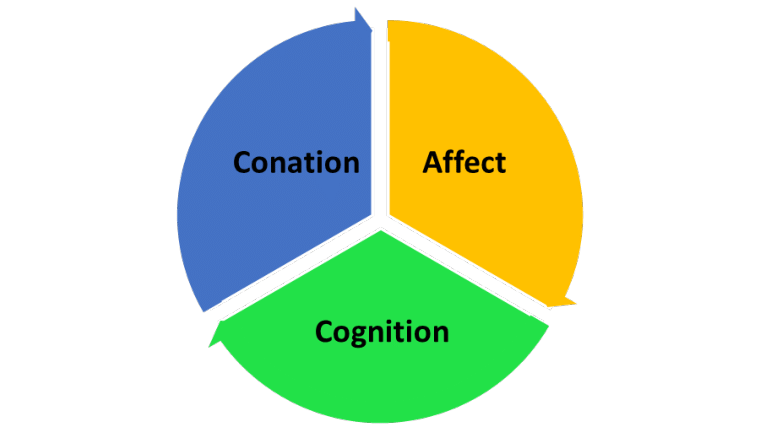
Tri-Component Attitude Model: Components, Examples & Applications
The Tri-Component Attitude Model is a psychological framework that explains how attitudes are formed and influence human behavior. This model breaks down attitudes into three essential components: cognitive, affective, and behavioral. Widely used in psychology, marketing, and organizational behavior, this model provides insights into how individuals think, feel, and act toward an object, idea, or situation.
In this article, we will explore the Tri-Component Attitude Model, its components, examples, applications, and its significance in understanding consumer and human behavior.
What is the Tri-Component Attitude Model?
The Tri-Component Attitude Model describes attitudes as a combination of three interrelated components:
- Cognitive Component: Represents beliefs or knowledge about an object or situation.
- Affective Component: Refers to emotions or feelings toward the object.
- Behavioral Component: Involves actions or intentions toward the object.
These components interact to form an individual’s overall attitude, influencing their decision-making and responses.
Components of the Tri-Component Attitude Model
1. Cognitive Component
- The cognitive component relates to the thoughts, beliefs, or knowledge a person has about something.
- Example: A person believes that regular exercise improves health.
Key Features:
- Based on factual information or perceptions.
- Shapes how an individual evaluates an object or situation.
2. Affective Component
- The affective component involves emotions and feelings associated with an object or situation.
- Example: A person feels happy and energized after exercising.
Key Features:
- Often subjective and varies from person to person.
- Strong emotions can heavily influence attitudes and decisions.
3. Behavioral Component
- The behavioral component reflects the actions or intentions of an individual toward the object or situation.
- Example: A person decides to join a gym and exercise regularly.
Key Features:
- Represents the outward expression of attitudes.
- Aligns with cognitive and affective components in most cases.
Examples of the Tri-Component Attitude Model
- Consumer Behavior
- Cognitive: A consumer believes Brand X is affordable.
- Affective: They feel satisfied using Brand X products.
- Behavioral: They purchase Brand X products regularly.
- Workplace Attitudes
- Cognitive: An employee believes their job offers growth opportunities.
- Affective: They feel motivated and valued in their role.
- Behavioral: They work hard and contribute to the organization.
- Environmental Awareness
- Cognitive: A person believes recycling helps reduce pollution.
- Affective: They feel responsible for protecting the environment.
- Behavioral: They actively recycle and encourage others to do the same.
Applications of the Tri-Component Attitude Model
1. Marketing and Advertising
- Marketers use the Tri-Component Attitude Model to influence consumer attitudes and drive sales.
- Example: A campaign emphasizing product benefits (cognitive), evoking emotions (affective), and encouraging purchase (behavioral).
2. Organizational Behavior
- Employers assess employee attitudes to improve engagement and productivity.
- Example: Providing recognition (affective) and career development opportunities (cognitive) to encourage better performance (behavioral).
3. Social Campaigns
- Nonprofits use the model to change public attitudes toward social issues.
- Example: Anti-smoking campaigns target beliefs about smoking (cognitive), raise awareness of its dangers (affective), and encourage quitting (behavioral).
4. Education
- Teachers use this model to shape student attitudes toward learning.
- Example: Highlighting the value of education (cognitive), fostering a love for learning (affective), and encouraging study habits (behavioral).
Importance of the Tri-Component Attitude Model
- Understanding Behavior
- Helps decode how thoughts, feelings, and actions influence decision-making.
- Improved Communication
- Assists marketers, educators, and leaders in crafting messages that resonate with their audience.
- Behavior Prediction
- Analyzing attitudes can predict future actions and preferences.
- Enhanced Strategy Development
- Enables the design of effective strategies for marketing, behavior change, and public campaigns.
Strengths of the Tri-Component Attitude Model
- Comprehensive Framework
- Covers the cognitive, emotional, and behavioral aspects of attitudes.
- Versatility
- Applicable across various domains like marketing, psychology, and organizational behavior.
- Behavioral Insights
- Provides a clear understanding of how attitudes influence actions.
Limitations of the Tri-Component Attitude Model
- Complex Interactions
- The relationship between the components is not always linear or predictable.
- Influence of External Factors
- External factors like societal norms or peer pressure can override individual attitudes.
- Subjectivity
- Affective components are subjective, making them harder to measure accurately.
Tri-Component Attitude Model in Consumer Behavior
1. Cognitive Stage
- Marketers provide factual information about a product to shape beliefs.
- Example: Highlighting the affordability and durability of a smartphone.
2. Affective Stage
- Advertisements evoke emotions to connect with the audience.
- Example: Showing how a product can bring joy to a family.
3. Behavioral Stage
- Call-to-action prompts consumers to purchase the product.
- Example: Limited-time discounts or free trials.
How to Use the Tri-Component Attitude Model Effectively
- Identify Target Audience
- Understand the beliefs, emotions, and behaviors of your audience.
- Craft Tailored Messages
- Address cognitive, affective, and behavioral components in your communication.
- Measure Attitudes
- Use surveys or feedback mechanisms to assess audience attitudes.
- Monitor Results
- Track changes in behavior to evaluate the effectiveness of your strategy.
Conclusion
The Tri-Component Attitude Model provides a valuable framework for understanding and influencing attitudes. By addressing the cognitive, affective, and behavioral aspects, it offers actionable insights into human decision-making and behavior.